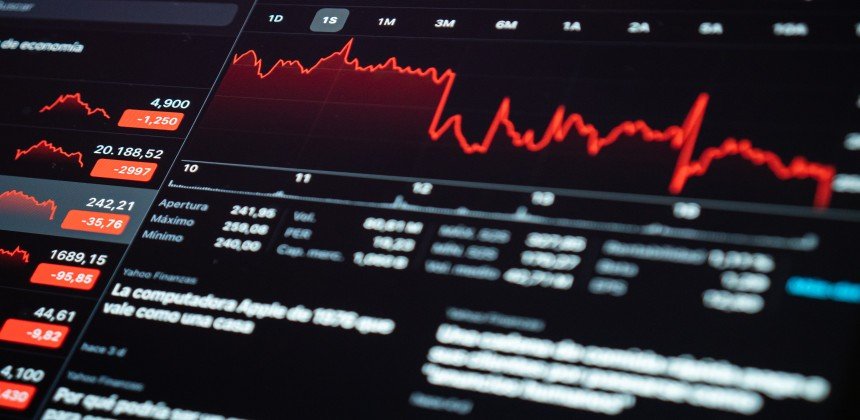
In the modern financial landscape, technology is revolutionizing the way trades are executed. Algorithmic trading, also known as algo trading, has become a key component in financial markets, allowing for faster and more efficient execution of trades. But what exactly is algorithmic trading, and how does it work? This article will delve into the concept of algorithmic trading, its benefits, how it works, and the types of strategies it uses.
Algorithmic trading refers to the use of computer algorithms to automatically execute trades in financial markets. These algorithms are programmed to follow specific rules or instructions based on predetermined criteria, such as price, timing, volume, and other factors. The goal of algorithmic trading is to optimize trading strategies, reduce human error, and increase efficiency.
In simple terms, instead of manually placing trades, traders use algorithms to make decisions and execute orders. These algorithms can analyze vast amounts of market data, process it at lightning speed, and execute trades much faster than a human trader could ever achieve. As a result, algorithmic trading can provide traders with an edge, especially in high-frequency trading (HFT) environments.
Algorithmic trading works by utilizing mathematical models and algorithms to make trading decisions and place orders based on specific conditions. Here’s a step-by-step breakdown of how algorithmic trading functions:
Define Trading Strategy: The first step in algorithmic trading is to define the strategy that the algorithm will follow. The strategy can be based on various factors, such as technical analysis, market conditions, or historical price data. For example, a moving average crossover strategy might be used, where the algorithm buys when a short-term moving average crosses above a long-term moving average.
Design the Algorithm: Once the strategy is defined, a programmer or trader creates the algorithm that will implement the strategy. The algorithm is a set of rules written in a programming language like Python, Java, or C++. The rules specify the conditions under which the algorithm will place buy or sell orders, manage risk, and monitor the market.
Backtest the Strategy: Before deploying the algorithm in live markets, the strategy is backtested using historical data. This allows traders to evaluate how the algorithm would have performed in the past, helping them to fine-tune and optimize the strategy.
Execution of Trades: Once the algorithm is ready, it is deployed on a trading platform or exchange, where it can automatically execute trades based on real-time market data. The algorithm will monitor the market, analyze price movements, and execute orders when the predefined conditions are met.
Monitoring and Adjustments: Even though algorithms can trade automatically, human oversight is still necessary. Traders must monitor the performance of the algorithm and make any necessary adjustments to the strategy if the market conditions change.
There are several benefits of using algorithmic trading in modern financial markets:
Speed: Algorithms can execute orders much faster than human traders. They can process data in milliseconds and execute trades within fractions of a second, which is especially valuable in fast-moving markets.
Accuracy and Precision: Algorithmic trading eliminates the possibility of human error, such as mistyped orders or missed opportunities. Algorithms can follow precise instructions, ensuring trades are executed according to the strategy’s requirements.
Reduced Costs: Automated trading can reduce transaction costs by executing trades at the optimal times and minimizing the need for manual intervention. Moreover, it can help avoid slippage, which occurs when a trade is executed at a different price than expected.
Backtesting and Optimization: Before deploying an algorithm in live trading, traders can test their strategies using historical data. This allows them to fine-tune their strategies and optimize performance based on past market conditions.
24/7 Trading: Algorithmic trading can operate around the clock, making it ideal for markets that trade 24/7, such as cryptocurrency markets. Algorithms can take advantage of market opportunities even when traders are not awake.
Scalability: Algorithms can execute large volumes of trades that would be difficult or impossible for human traders to manage. This is particularly beneficial for institutional traders or hedge funds that need to manage vast amounts of capital.
There are several types of algorithmic trading strategies used in financial markets, each with its own approach and purpose:
Trend-Following Algorithms: These algorithms attempt to identify and trade in the direction of prevailing market trends. They rely on indicators like moving averages, momentum, and trend lines to execute buy and sell orders.
Mean Reversion Algorithms: These algorithms are based on the idea that asset prices will tend to revert to their historical average or mean over time. If an asset's price deviates significantly from its historical mean, the algorithm may buy or sell to profit from the expected reversal.
Arbitrage Algorithms: Arbitrage trading involves exploiting price differences between different markets or exchanges. These algorithms identify inefficiencies in the market and place simultaneous buy and sell orders to capture risk-free profits.